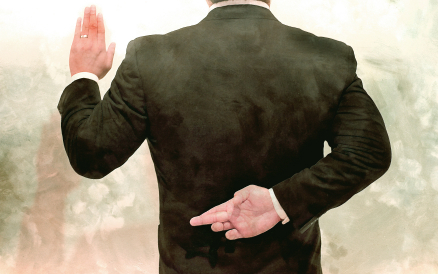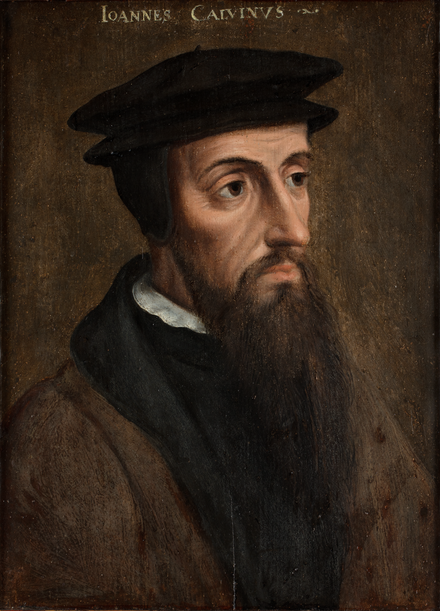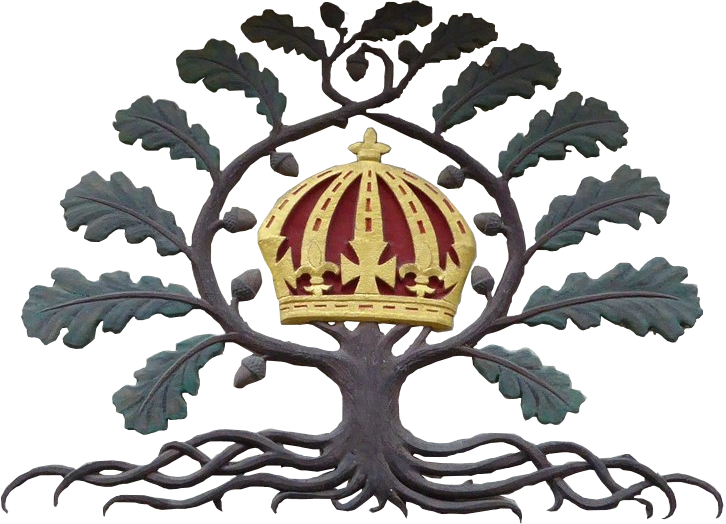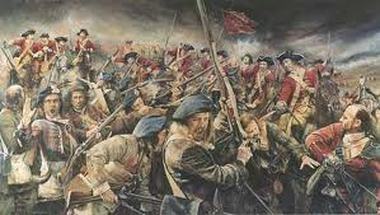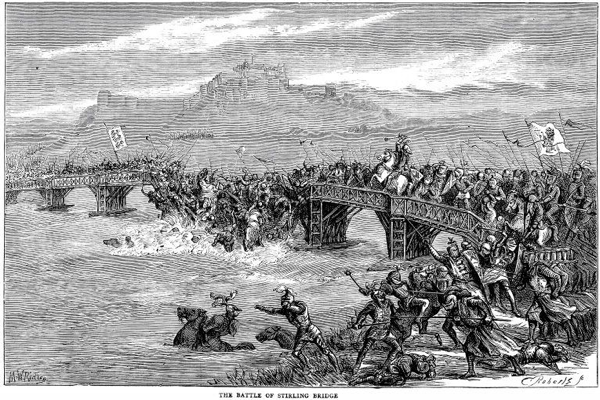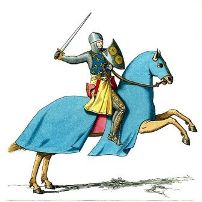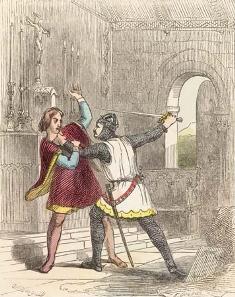

If there was a kingdom more staunchly opposed to English rule than Ireland, it was of course Scotland, and anyone who’s seen Braveheart knows the contempt the English kings held the “northern savages” in, and how the brave Scots refused to bow down. So why, after all that man did, after the hideous death he endured to try to ensure the independence of his nation, did Scotland bend the knee?
I’ll be damned if I know, and I’ve wondered, but I just bet you it has to do with coins clinking into hands. Let’s see if it was money that made the merger possible.
Highland Warriors: A Brief History of an Independent Scotland
There’s always been a very strong bond between the Irish and the Scots. We both originate from Celtic tribes, Gaels from Northern Europe who settled here around the time of the Roman Empire, and we retain many similarities both in our language and our culture. Scots call a nice thing braw, whereas we say brea, we call the English na sasenaigh, their name for them is sassenachs, and most of our names hinge on the paternal - son of; Mc or Mac (Mach, for son) or O, as in of - so MacDermott, O’Neill and so on. But if there’s one thing that’s common to both of us more than any other factor it’s our dislike of the English. Even now, call a Scotsman or woman English and you’re looking for a Glasgow kiss! You don’t want to know what that is, if you don’t already know.
Scotland, called in the time of the Romans, Caledonia, was originally inhabited by ancient tribes called the picti, or picts, but unlike the original Irish, whom the Celts defeated and supplanted in Ireland, the reverse seems to have occurred in Scotland, as the Picts attacked and destroyed the scotia town of Dal Riada. Converted first to Celtic Christianity by Irish missionaries and later to Roman Christianity by the mission mounted in the sixth century by Pope Gregory the Great to convert the Anglo-Saxons, the picts nevertheless became known as scoti, or scots, to the English, and their land forever named Scotland. The invasions by the Vikings though at the end of the eighth century forced the remaining Scoti (Gaels) to ally with the Picts to resist the Norsemen, and the Kingdom of Scotland was established.
That was in the ninth century, and as you might expect, the Scots spent the next three hundred years knocking seven shades of shite out of each other in struggles for the Scottish throne, till England’s Edward I decided he rather looked the like of it, and decided to pinch it for himself. Into the story of Scotland then of course strides William Wallace, portrayed by Mel Gibson (rather unrealistically and historically inaccurately, so I’m told) on the big screen, to fight for Scotland’s independence. It wouldn’t be the first or last fight the northern kingdom would engage in with its larger southern neighbour.

The Wars of Scottish Independence (note the usage of the plural there; the Scots didn’t admit defeat easily!)
Timeline: 1296 - 1357

As ever, blame the kids. Or rather, lack of them. When King Alexander III died he left only one heir, strictly speaking an heiress, his granddaughter Margaret, herself the scion of a mere fifteen year old king, Eric II of Norway. Being the daughter of Alexander’s daughter (also called Margaret - not very imaginative, these people!) and as the line of succession in Norway proceeded along strictly male lines, she was to inherit the Scottish throne if Margaret (the mother) did not produce any male heirs for Alexander. Margaret (for the sake of clarity and my sanity, we’ll refer to the young Margaret as she was known, the Maid of Norway, or for us, just the Maid) was the sister of Edward I, so there were some pretty strong ties to England there already.
When Margaret died in 1258, Alexander, having no male heir, thought to take a new wife, and settled on Yolanda of Dreux. To give him due credit, he waited ten years before marrying again. However a year later he was killed, breaking his neck. I don’t know under what circumstances, whether or not foul play was involved. What I do know is that his death threw the whole question of succession into turmoil, as Yolanda was by then pregnant, and six regents were chosen, called “the Guardians of Scotland” to hold the throne for whomever ended up being its rightful occupant. As it went, Yolanda’s child was stillborn, which left the Maid as the only legitimate claimant for the monarchy.
And so in due course King Eric’s envoy arrived in Scotland to claim the throne on behalf of the three-year old Maid, but ran into opposition when Robert Bruce (not Robert the Bruce; he was later) raised a rebellion against the decision. He was defeated though, but the situation was deemed too dangerous by Eric to send his daughter there, and he instead asked his father-in-law to arbitrate. Edward was only too happy to exert his power and influence over the choosing as to who would rule Scotland, and to nobody’s surprise ruled in favour of his grandniece. As he also retained the right to choose her husband, the Maid was promised to King Edward’s son, also called Edward, now to be King of Scotland, and with the signing of the Treaty of Salisbury in 1289 Margaret, Maid of Norway was agreed to be and confirmed as the heir to the throne of Scotland, while the Treaty of Birgham the following year enshrined Scotland’s independence as a separate kingdom from England.
Eric accordingly sent his granddaughter, now seven years old, to claim her right, but by the time she arrived in Orkney Island she was sick and soon died, her body being returned to Bergen for burial. No definite reason is given for her death, but hey, back then people seemed to die at the drop of a horned helmet, so could have been anything. Maybe someone poisoned her? Either way, all the work Edward and his ministers had done, all the wrangling and coming to a decision and the Treaty of Salisbury all came to nothing.
And then, all hell broke loose.
With no further legal claimants on the throne, no less than thirteen candidates stepped forward to duke it out, including one pretender who was burned at the stake for her pains. We’ll look at them all now, including her.
Unlucky for some? The Scramble for the Scottish Throne
Not much time to mourn the never-coronated new queen, as news of her death inspired an undignified power grab by anyone who believed they had a claim to the kingship of Scotland. They were:
With at least a legitimate claim
John Balliol: Descended almost directly in a bloodline from King William the Lion, Scotland’s longest-reigning monarch prior to the rule of James VI (who would later become James I of England - not the same James, Duke of York, who was brother to King Charles II), Balliol was the son of John, 5th Baron of Balliol and Dervorguilla of Galloway, granddaughter of David, Earl of Huntingdon, himself brother to William the Lion. As claims go, his was definitely the strongest.
Robert Bruce (de Bruis): He was also related to the great king’s brother David, through his mother Isobel of Huntingdon, making him David’s grandson. Bruce served as Regent of Scotland before King Alexander could take his place on the throne, and was the closest surviving male relative to the king. Named heir presumptive, he lost out on his chance when Alexander’s wife brought forth three children, seeing his last chance vanish when Margaret, Maid of Norway was brought over to take the throne, having been confirmed by Edward I as the legitimate heir. When Margaret died though, Bruce saw his chance and put his claim forward.
John Hastings, 1st Baron Hastings: The first claimant who was not Scottish but English, he was also a Welsh noble, but seems to have based his claim to the Scottish crown on his being a grandson of the daughter of David, Earl of Huntingdon.
Floris V, Count of Holland. He too claimed right to the throne through his great-grandmother Ada, daughter of David of Huntingdon.
John Comyn II of Badenoch: called “The Black”, he was one of the six regents of Scotland chosen to hold the throne for its rightful heir (which turned out to be the Maid of Norway and then on her untimely death descended into chaos). He claimed right through being descended from another Scottish King, Donald II, but his claim was sort of half-hearted, as he knew and expected his brother-in-law, John Baliol would be chosen.
Eric II of Norway: As father of the Maid, he certainly had a claim, but had neither the support nor the force of arms to push such a cause. It’s unlikely he really wanted it anyway, mourning for the death of his daughter, and he would die a mere nine years later anyway.
That takes care of the legitimate, or at least credible applicants. But of course, there will always be pretenders, chances, people-who-know-people and think that gives them the right and so on, so let’s check out the less likely claimants.
Less than a snowball’s chance
Nicholas de Soules: he claimed right to the throne on the basis of being the grandson of Marjorie of Scotland, illegitimate daughter to King Alexander II. He was also brother to one of the Guardians of Scotland.
Patrick Galithly: His claim was considerably more dubious, in that it relied on his being the grandson of a supposed illegitimate son of William the Lion. Yeah, that was never going to fly.
William de Ros: Nor was his claim, being based on his being the great-grandson of an alleged illegitimate daughter of William the Lion.
William de Vesci, Baron de Vesci: Relations to a bastard were also behind his claim, this to another illegitimate daughter of William the Lion, Margaret (yes, another one) whom he claimed to be his grandmother. He’s the only one with any Irish connection I can see, in that he founded the abbey in Kildare in 1260 for the Franciscans. Didn’t help his claim for the throne though.
Patrick Dunbar, Earl of Dunbar: Also claimed the right due to being a great-grandson of Ada, King William the Lion’s bastard daughter.
Richard de Mandeville: He claimed he was a great-great-grandson of yet another bastard daughter of William, this time Aufrica.
Sir Roger de Pinkeney, Baron de Pinkeney: His claim came from being a great-grandson of Marjorie of Scotland, like de Soules only a generation removed.
Norway is that going to work! The False Margaret
Technically, not a claimant for the Scottish throne, though I suppose she could have been seen as a late entry, had anyone fallen for it. Some did, but nobody of real consequence. Her name is Margaret, or at least that’s how history remembers her, her real name lost to time, and she is, as noted above, referred to as the False Margaret. Why? Well you remember Margaret, the Maid of Norway, and how she was supposed to have died on the way to claim her birthright at seven years old? Right, well, this one apparently appeared in Bergen 1301, eleven years after the Maid was supposed to have snuffed it, and coincidentally (or not really) two years after her dad, King Eric II of Norway, had followed her into the afterlife.
Claiming to be, wait for it, the Maid, not half as dead as people thought, she declared that she had been taken prisoner and sent to Germany where she had lived in secret. Now she was back, and she claimed her throne. While as I say some people fell for this, most remembered a rather important point - two, actually: the first being that the old king had personally identified the body of his daughter when it had been returned to Bergen, and while it might be true that many fathers don’t really know their daughters as well as they think, it’s a pretty safe bet that any of them could identify the corpse of their little darling, which is what a heartbroken Eric did.
The other point - perhaps more damning and making this attempt more laughable than your next-door neighbour casually confiding to you that he is in fact the risen Christ, and not a waster whose wife left him for the milkman six years ago - was her age. If the Maid had in fact survived, and not died in 1290, then by 1301 she would have been coming up to her seventeenth birthday, and while some women are lucky and don’t look their age (or are told they don’t), this Margaret was well in her forties. So unless the Maid had slipped through some sort of temporal wormhole and had been living a quiet existence in Narnia or Middlesex for nigh on thirty years, there was no way this woman could be who she claimed to be.
The king thought so, too. Haakon V, brother to Eric, dismissed her claims - which included accusations of treason by some of his court - and had her burned at the stake. Her husband, who had plotted with her, literally lost his head, though some accounts say he was burned alongside her. Rumours that she may have been used in a plot by Audun Hugleiksson, right hand to two different kings (though neither Eric nor Haakon), led to his execution a year later. He had already been imprisoned before the False Margaret landed in Norway, and it’s possible that had she been accepted as queen he would have expected to have been released. As it was, he was hanged.
Those who did believe Margaret was the Maid formed a martyr cult around her, and a church was built on the spot where she was burned, but later it was demolished.
The Great Cause
As often, almost always happens when there is more than one claimant to a throne, Darwin’s principles come into play and the fittest, or indeed fastest or most cunning or richest survive. Alliances are made, promises are given, inducements handed over, positions promised, and whoever has the biggest army can take the throne by force. This of course often does not go down well with the other hopefuls, and war, often civil war, can break out, and usually does.
And so it would have, as the claimant with the best chance of securing the throne, John Bailiol, drew powerful nobles, including the English Bishop of Durham, Antony Bek, who was Edward I’s representative in Scotland, and declared he was the king. “We’ll just see abou’ tha’!” shouted Robert Bruce, angrily, as he enlisted both the Earl of Mar and the Earl of Atholl to his cause, the two forces facing off against each other.
And of course, England, which has always been the peacemaker in such disputes, stepped in.
Well, not quite.
Fearing civil war, the Guardians of Scotland turned to Edward I to arbitrate. Everyone would have to listen to the king and abide by his decision, as most if not all retained substantial lands south of the border. Edward had long been annoyed that Scotland refused to acknowledge him as its overall king (even though he and his predecessors still styled themselves as “king/queen of England, Scotland, Wales and Ireland” - words are cheap) and demanded that before he agree to mediate the dispute and help choose a king, the country must swear fealty to him. “Och awa’ wi’ ye!” they all said, or something similar, but a compromise was reached and Edward consented to sort the mess out. I suppose he thought that whichever king he chose, they would owe him gratitude for taking his side, gratitude he could capitalise on later if needed.
In the end it came down to four: John Bailiol, who was seen to have the strongest claim by the ancient right of primogeniture, Robert Bruce as the nearest blood kin, John Hastings who, though a descendant of David I, was an Englishman and therefore hardly eligible, even though he tried to argue Scotland was not a real kingdom (an odd stance to take, I would have thought, if you’re planning to rule the place!) and Floris V, who had some spurious claim that David I had ceded the right to rule as king to his brother William, but this was throne (sorry I mean thrown) out for lack of evidence. Edward chose Bailiol and made sure all the other claimants and the Guardians supported and agreed with his decision, and the Great Cause was settled.
Scotland had her new king.



